After heat in Perugia, La Belle Époque arrives on the shores of Lake Trasimeno
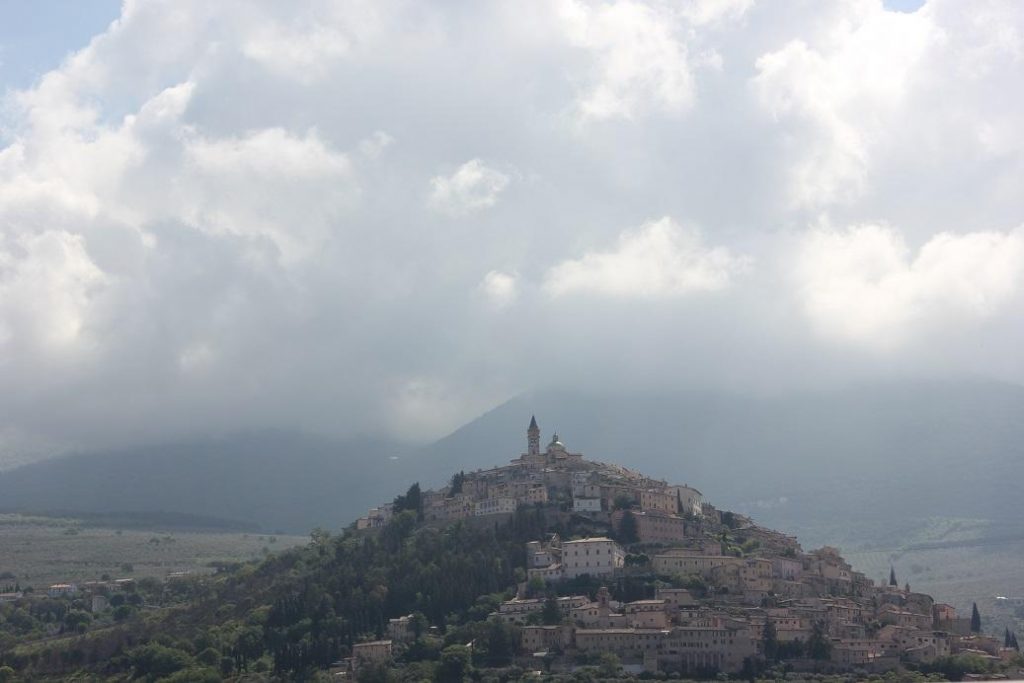
Though sad to leave Maurizio and Manuela’s house – with their friendly family and humorous evenings in wine-encouraged discussion, the gifts of fruit and broad beans – we were more than glad to return the hire car. Maurizio lent bucket and hose, and translated by Manuela, they both proclaimed the car looked fit for a showroom.
Driving northeast on fast roads, I was convinced the car wouldn’t reach the Hertz depot undented. A chaos of closed traffic lanes and junctions into Perugia piled on the stress, but we found the depot with barely a toot. What a relief to leave the responsibility of cars behind – though lugging the heavy bags up into the city from the station, was hot work. Later, walking to Montegrillo on busy roads without pavements, backtracking to fathom the buses . . . was an experience best skipped over.
Society has long been accustomed to overrated art taking centre stage – a fact I’d been reminded of by the acres of wall-sized collages featuring celebrities-in-Spoleto, the day before. In several of these, and into that overrated category, strayed such an inviolable Establishment figure as Henry Moore. Not that my opinion of Moore comes without a twist, coloured as it inevitably was by his assessment of Graham Sutherland in an radio obituary program back in early 1982[i]: “He made a great contribution to British painting,” opined Moore about his erstwhile friend, with such a distinct tone of damming-with-faint-praise, that it poisoned my view of Moore – an artist I was previously able to tolerate and even enjoy. But maybe the poor man didn’t mean his words to come out that way? Or to imply that Sutherland was minor, whereas he, Henry Moore, was an internationally acclaimed world master? He may have just been upset. How much weight do such assessments carry anyway, when for a century at least, fame itself has been the stuffing inside so many prominent turkeys?
Yet the negative effect of overrated international art pales by comparison with (often international) lifestyle magazines as previously defined[ii]: glossy productions containing reams of pointless misdirection, celebrity worship and inanity, certainly worth far less than the paper they’re printed on. In the suburb apartment at Montegrillo, Perugia, were two such magazines: Marie Claire (Italia), and Grazia. In vain, I searched for worthwhile content in either. Does anyone ever do more than flick through such misleading, snobbish, materialistic, aspirational drivel? I certainly hope not. Even in a waiting room, I’d expect scorn or disbelief. Marie Claire was 504 pages thick! Almost an inch of high-quality printing, all for €3.50. You could fit most worthwhile artists’ entire life works into half that number of pages . . . but who would pay to advertise in such idealistic volumes? Ergo, far too many people must buy and ‘read’ international, standardized cr*p such as Marie Claire, if only to rapidly donate it to the local dentist. There, the piles of sticky gloss can rot brains rather than the white shining teeth grinning from looped videos.

Evening from the apartment in Montegrillo 23rd May 2019
As I preferred to walk rather than take the bus, next morning we all met up in Perugia’s central square. I had immediately recognised Piazza IV Novembre the day before from Sergio Martino’s giallo[iii] film, Torso[iv] of 1973: “A string of appalling lust murders shocks the University of Perugia as a sadistic serial killer strangles to death beautiful college girls with a red and black scarf”. Considering that forty-six years have passed, it’s surprising how little the square has altered, the main improvement being that traffic is now restricted – although the odd modern car does still foul the area. I have since attempted to watch Torso again, but to my mind, it’s not one of the best gialli – a genre which at its worst, can be as brain-decaying as the average lifestyle magazine. Although Suzy Kendall and Luc Merenda are both pretty, photogenic and appealing, Torso’s value is confined mostly to its locations, which include Tagliacozzo, a town I remembered us passing through between Avezzano and Castel Madama. Mist and rain had rendered it unrecognizable.
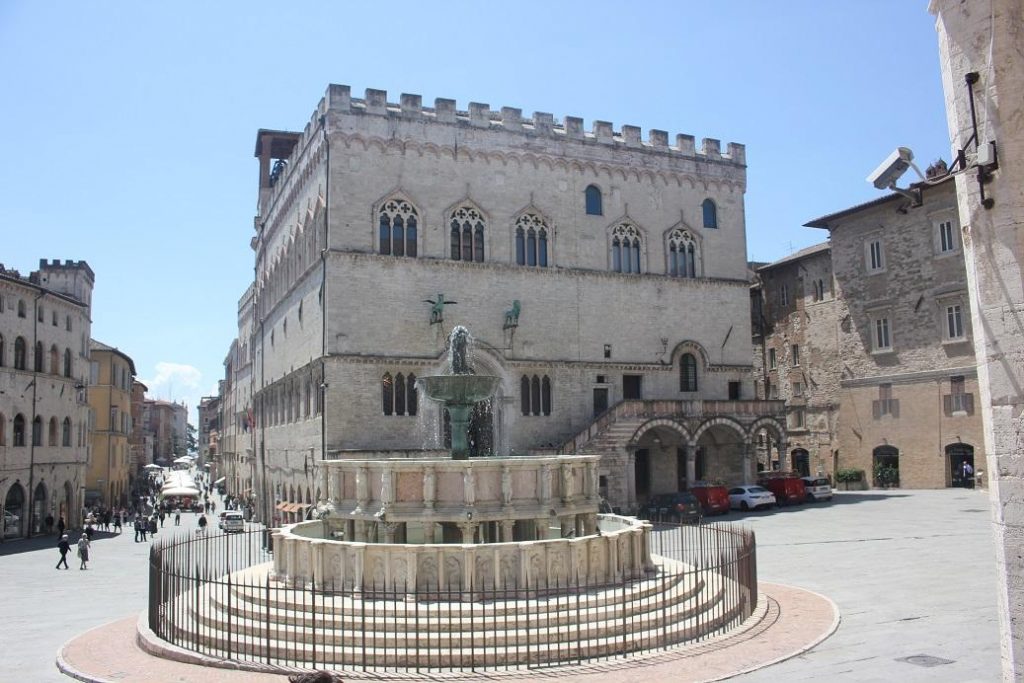
Piazza IV Novembre, Perugia 24th May 2019
For various reasons, the notes I made in Perugia and Montegrillo are limited. For one thing, unlike the pouring rain as I write this now, both the 23rd and 24th of May were very hot. Staring at the photos, heat glows from building surfaces and wavers from the crowns of the stone pines. Areas of shadow look inviting. Yet to what extent should I celebrate places such as Perugia, when travel is clearly something which needs to be rationed? Though disappointed by his book Zona[v], (dissecting Tarkovsky’s Stalker), since the beginning of 2020 I’ve been enjoying Geoff Dyer’s White Sands[vi] travel essays . . . or more accurately, anti-travel essays. You read them and are largely glad you can’t and won’t go to the places mentioned. He has paid the price and done it for us.
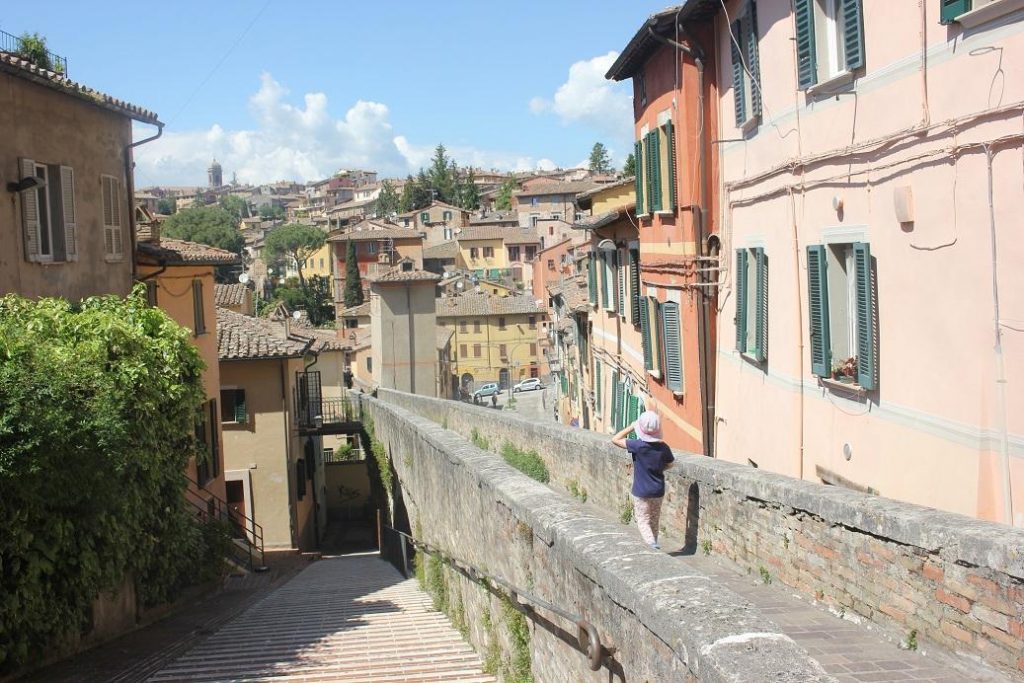
Roman Aqueduct now a footpath, Perugia 24th May 2019
Early next day, after another brief incursion into an untried zone of Perugia, we were on a westward train, savouring lumps of bread torn from the unique loaf bought near the station – the one it almost fractured my wrists to break into. It didn’t take long to travel the 17 miles to Passignano sul Trasimeno. Kindly, our Airbnb host met us at the station to take us to her flat – two windows of which framed Lago Trasimeno[vii], fourth largest lake in Italy. Quickly sorting what we needed, we headed to the lake shore. It was still only mid-morning.
Although the children gazed longingly at the (world master, standardized) playpark not far from the jetty, we wanted to find somewhere quieter and more natural where they could try swimming. Strolling the promenade above the beach, not far from the station, we passed some huge abandoned sheds – possibly connected to the now defunct Ambrosini factory? Beginning in 1922 as a manufacturer of light touring and racing aircraft, SAI Ambrosini[viii] later diversified into boats and oil-rigs – apparently to no avail. Perhaps this isn’t surprising considering Passignano’s landlocked situation? There is the lake of course . . . but with an average depth of 13-16 feet, could oil rigs be properly tested?
Soon, under warm cloudy skies hazing the landscape, the paled lake was in the distance. As the town fell behind, it seemed we had missed our chance for a swim.
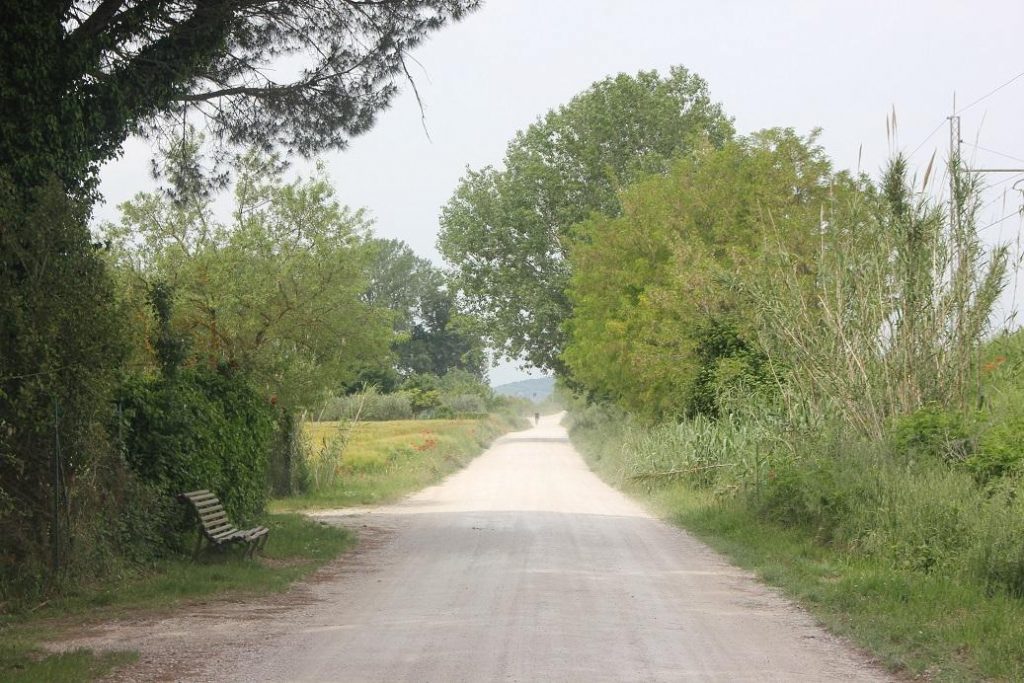
Metroland and La Belle Époque in Umbria 25th May 2019
Following a long dusty white road between barley fields rich with poppies and hedged as an English vale . . . it felt to me, under the opalescent sky, that we’d strayed into a warm summer day in Edwardian Metroland[ix]. London was a memory beyond the trees, occasionally accessible by train from a gaslit wooden halt. The lane we were on might never be developed and perhaps the First World War would never happen.
Though this was a fleeting impression, the undercurrent of an imagined halcyon time persisted with me for the rest of the day.
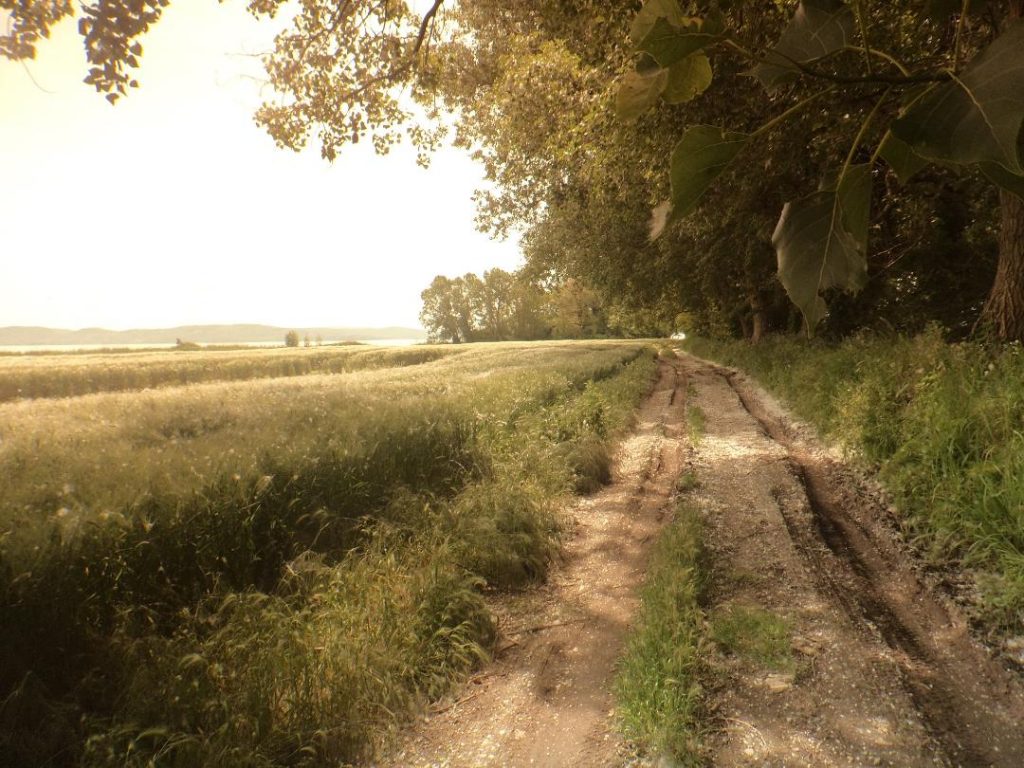
A track along the edge of a field under Metroland trees, returned us to the lake shore where distant mountains became visible beyond the water. The poppies in the barley and the snowy haze of dust from seeds or blossom shaped the dream of an undemanding impressionist painting. By the shore we found an ideal place for lunch, while wild birds crooned and croaked from all around, hidden in the reeds. Suddenly the cloud cleared and there was hot sun to go with the universal calm. Both Monet and all things Edwardian, retreated a little, though the fish that leapt from the lake now and then reminded me of Douglas Constable’s 1932 poster, Fishing in Metro-Land[x]. K wrote of this as the happiest family day of the holiday.
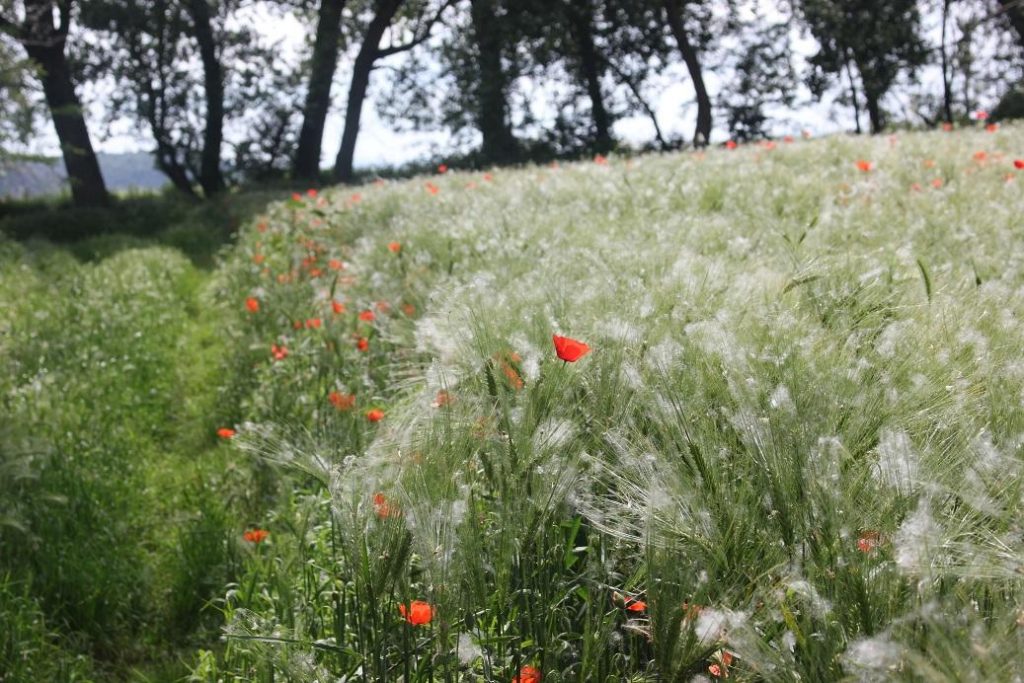
Quite unsummoned and perfectly in tune with the lakeside, my mind recalled 1973 by the river Ure in Wensleydale. For another summer holiday, we were staying at my mum’s friend’s cottage in the village of Castle Bolton while she was away. Throughout those two weeks the sun barely found a cloud. For six or seven days consecutively, it was over 80o Fahrenheit by mid-morning. Centigrade (or Celsius) mean nothing to me, but apparently 80oF equals 26.6667 Centigrade. Although this isn’t hot by continental standards, still we sought the river under the trees. Reading and talking, mum and dad cooled their drinks in the river, while my sister and I floated about on lilos, built dams or explored the rapids and waterfalls. I don’t remember seeing anyone else all day. The wide river was too shallow even for canoes. Despite that she died back in 2013, rather than the sadness of remembering my mother then at 33, I’d passed into a state of timelessness. Not only was the summer of 1973 alive again, but other memorable summers were drawn in. Most prominent was Dartmoor and especially the lush fields by the river near Chagford in 1984. There a friend of mine fell into a deep sleep under the shade of some trees. We’d had a few drinks at the Rose & Crown, and assailed by hay fever, he slumbered away half the afternoon, giving me ample opportunity to read the book he’d brought on our projected walking tour: Rimbaud, Complete Works and Selected Letters[xi]. By Lake Trasimeno 35 years later, all these time periods freely combined into a semi-visionary state – of contentment rather than ascension.
Disparaging the rough reeds sticking up from the lakebed, the children played in the water while I swam far into the Lake. The afternoon drifted by. There and in Wensleydale it passed. There and below Dartmoor it flowed. At times I recalled Lake Bala in Wales, the Thame in Bucks or the Clun in Shropshire. And then we were walking back, remembering the lake with distant mountains and clearly Umbrian hills. In the distance were villas and tall dark poplars, distinctly un-English away from that dusty white lane. La Belle Époque receded beside the wires of the railway which ran parallel – bringing to mind instead that distinctive Italian high-speed train of the 1950s: the luxurious Settebello[xii].

Last night, K and I began to watch Agnieszka Holland’s 1995 film of Christopher Hampton’s play about Verlaine and Rimbaud. Regardless of all the talent involved, sadly my scepticism about Total Eclipse[xiii], proved more than justified. Several jokes with the same theme could be made about this apt title and I might try a few. Most obvious is that the film totally eclipses the best of Rimbaud’s work: his Traherne-like[xiv] nature mysticism; the ecstasy that makes age and time irrelevant; his eagerness before disillusion overcame him. Instead, the film over-emphasises the vowels[xv] of the sordid.
Does this 1995 production with multi-national cast and crew, have more than the haziest grip of its period? Some rural scenes convince because selected mud, lanes and woods, cannot help but be what they are. Occasionally this stretches as far as certain buildings. Generally however, Total Eclipse, crosses a medieval rats-on-sticks[xvi] ethos (including predictable population of ragged oiks), with a soiled, faux 19th Century, Country Living Magazine tastefulness. Artful areas of crumbling walls glow by candlelight, while the oiks, partially packed away, jeer from the wings. It’s true that such criticisms could be made of just about every historical drama. Only a good or complete enough story and characters can carry us beyond this perhaps?[xvii] Total Eclipse plays its bisexual cards for all they are worth, trading on internal bourgeois shock as well as Roman Bohringer’s ample body, yet apart from the top hats and steam trains, it could be almost any period between Centuries 15 and 19 – and Verlaine and Rimbaud pass through like a uncouth 12-year-old led astray by a rude 9-year-old. Maybe none of this would matter if Rimbaud were of no account; if I didn’t mind him being reduced in the way that Van Gogh became the loony who cut off his ear.
It may be true, (as I’m always saying), that few, even great artists, produce more than a handful of things worth anything out of their time (or in it, come to that), but going back over Rimbaud (my same scraps of paper have been sticking from the pages since the 80s), despite that many poems become tedious, I wondered if he could be one of the few exceptions? My only caveat being: how much is Wallace Fowlie, the translator, to thank for my concept of Rimbaud? I ask this, not only because of my poor French, but also because I have a very low tolerance of poetry after about 1850, that rhymes overmuch on line endings. Rimbaud is fatal with such poison. If my French were fluent (far, far from it), I would probably have got the earlier poems of Rimbaud out of my system years ago. But thanks to Wallace Fowlie all that clunking has gone. This I’m sure is a personal thing. I don’t like boxing films yet will forgive any number of noirs featuring boxers – from John Garfield on, the list is too long – or almost any French film with Belmondo, who disrupted my thoughts just then, as ex-boxer in Melville’s memorable 1963[xviii] adaptation of Simenon’s Magnet of Doom (L’aîné des Ferchaux), an existential road movie that slides towards the sadness, of regret and exile. I don’t like rhyming the way that those indifferent to ballet might be dubious about Degas; or those phobic about mice (acceptable until they get in your cupboards), might prefer to erase Tom and Jerry or Mickey Mouse; or those not keen on trumpet, might avoid Kenny Ball . . . Rimbaud’s Roman of 1870 for example, has dix-sept ans, rhyming with éclatant! and in alternate lines, lemonade rhyming with promenade. Thanks to Wallace Fowlie[xix], this becomes seventeen blanking with lamps; lemonade with park. What a relief!

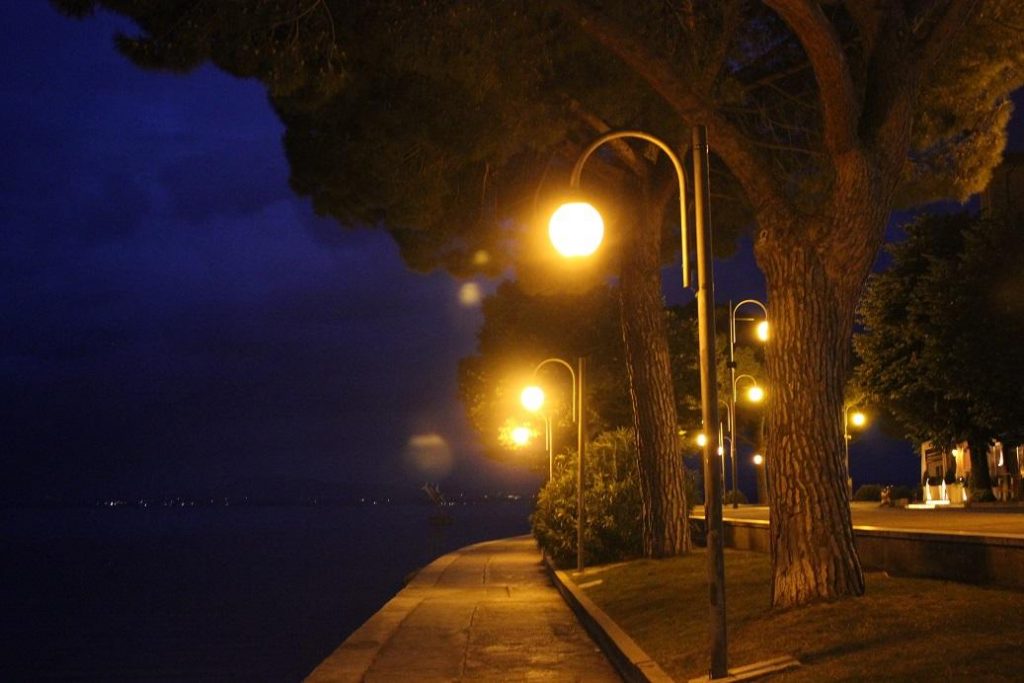
Unlike Rimbaud, who at 16 was melancholy for lost childhood, or more accurately for childhood’s hopeless longings, I never believed that childhood was (my paraphrasing of Rimbaud): “certainty and treasure – pure and exempt from doubt or falsehood”. In truth, from about five or six, I felt exactly the reverse. Yet when I opened my friend’s[xx] book by the youthful river Teign, having never heard of Rimbaud before, having tramped over fields all my life, painting and writing since I was 12 or 13, it was like finding a brother from a century earlier. Nothing surprised me about his early work, rather it was a recognition. Whether or not his poetry tore up the rules, I still don’t care. Those claims about originality and “game changers” never matter to me – all that stuff is superficial. The greatest art is always about the same things.
As for the Illuminations, many retain their sublime enigma – the visionary impulse strong enough to distance both the Romantic swoon and the random surrealism before its time. There are plenty of debts however, and at times its Arabian Nights get me down; at times it declines into psychedelia and purple . . .
“Based on letters and poems”, Total Eclipse sticks with Verlaine and Rimbaud’s supposed personalities. I dread to think what kind of farce could be constructed from my letters and poems. Though to be fair, what film could possibly encompass the Illuminations? What we get instead however, are two rude kids, behaving like idiots. This isn’t a worthwhile derangement of the senses, but an odyssey of pointlessness fuelled by absinthe, sex and hysterical brutality – with just the occasional bright idea, witty rejoinder or gnomic stalemate. It was easy to be shocking in the 1870s, by now we should have grown out of that. Or at least shocks must serve a real purpose. Perhaps the film was hoping for a Lust for Life[xxi] popularity? Sulky and vulgar by turns, Verlaine and Rimbaud do almost nothing in Total Eclipse to justify either respect or notoriety. Excepting the fake bald pate, the brilliant David Thewlis (who can forget him in Mike Leigh’s Naked of 1993[xxii]), is convincingly scummy and degenerate, but Leonardo Dicaprio, despite his best efforts and all the surface dirt, the scarecrow walk and legs and boots, looks and sounds like he’s just arisen, scrubbed and shining, from an Ivy League bath.
K gave up about an hour in. Next day, I tolerated the rest. The last fifteen minutes gain a modicum of seriousness with the “there is nothing more to say” decision by the Master of Silence. Somehow, nevertheless, it remains false. For all his truthful exuberance, Dicaprio as the post-teenaged poet, can’t help but look and sound ridiculous – a boy with a stuck-on moustache, while the background becomes sub National Geographic.
After it ended, I read through the Collected Poems trying to find what I found that summer 36 years ago. My friend’s favourite was always A Season in Hell; mine predictably, the Illuminations. Yet it’s a handful of the earlier poems that attach most to that time – thanks to Wallace Fowlie’s removal of rhyme. The glory or luck of these had not departed – but was it because, at the time, they immediately became invested in all the world I knew inside and around me? As at Lake Trasimeno, life on that Chagford afternoon had calmly bloomed with parallels, different times out of time. Above all, was it this multiplication of links, subtle but beyond the relatively predictable conformism of hyperdiegesis[xxiii], that heightened the poems and has lasted ever since? And if so, how often does this happen to us; how often do we give art the credit for our own essence?
My experience of Rimbaud was mostly of that summer and that riverbank in 1984 – not just in themselves, but as they connected to other summers, to other rivers, or even to moments that appeared quite dissimilar; to the friend under the roof[xxiv]; to the memory of the exotic[xxv] girls of Wendover[xxvi]. To the potential[xxvii] behind the girls in Claire’s Knee (1970)[xxviii] (who like the worshipped Her at the end of Rimbaud/Fowlie’s, Roman/Novel, deigning to write back, cannot help but betray the insight or depth they might be growing or will always lack). To holidays; to beer gardens of escape; to the cool shade of trees.
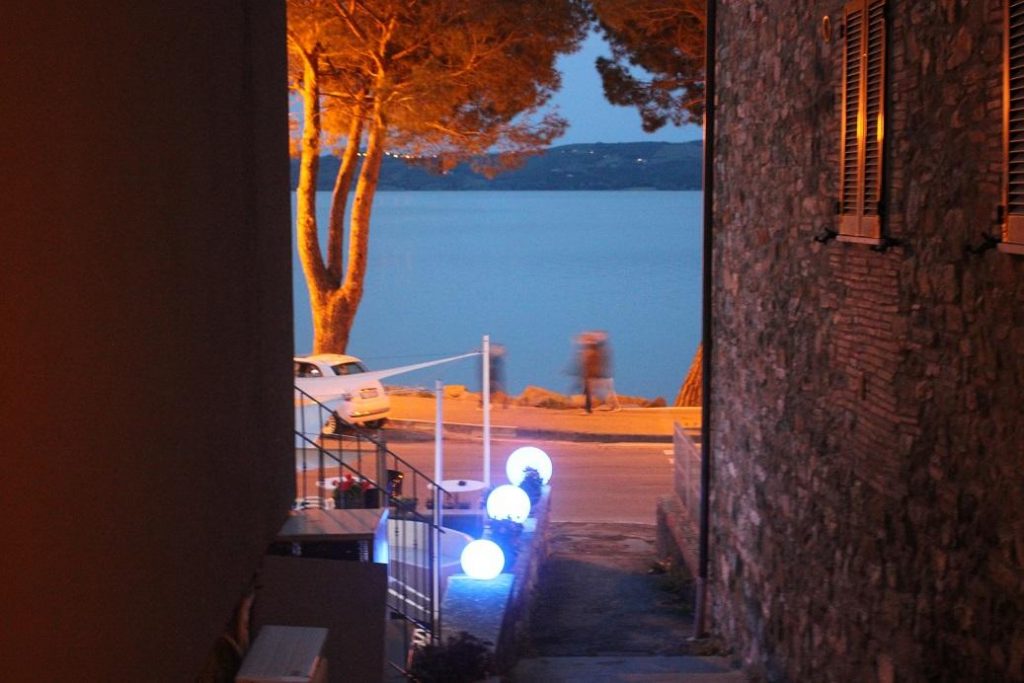
By the age of six, even while living the best of it, I felt the glory of life and its loss at the same time. I had no choice but to cultivate the transcendental. In Rimbaud’s work, a hundred years after it was written, I chanced upon a rich atmosphere of connection – how can it be more than that? A belated gratitude struck me and something more, something channelled by the landscape of Chagford, its summer richness under the moor. That escalated atmosphere remains haunting and visionary. It draws it power from nowhere and everywhere, underlining that even the greatest art is no more than a doorway. In the end, all the best things are already inside you.
Lawrence Freiesleben
Italy and Cumbria, May-June 2019 and January-February 2020
Despite numerous one-person exhibitions since leaving home at 16, Lawrence Freiesleben has always been out of step. Meanwhile, his first ‘novel’ The Bow was unfathomable, his second, Maze End, spent much of its time in Paradise, and his third, Certainty Under the Rose, was set in the early 1980s!! The fourth, Estuary and Shadow, recently resumed after a long hiatus, has yet to escape from limbo.
Having lived in over 17 different areas of the U.K. from Devonshire to Northumberland, currently, with his wife and youngest children, he lives on the marshes of the river Kent in Cumbria.
[i] I’ve been unable to track this program down to check my memory. I think it was on BBC Radio 3 or 4 at about the time when the Falkland’s fiasco dominated and altered schedules, although it could have been on TV? Not having a TV myself, my parents used to send me cassette tapes with the soundtracks of programs they knew I’d regret having missed.
[ii] http://internationaltimes.it/the-italian-digression-part-3-from-lake-barrea-to-castel-madama/
[iii] https://en.wikipedia.org/wiki/Giallo
[iv] https://www.imdb.com/title/tt0069920/?ref_=nv_sr_srsg_0
[v] https://www.telegraph.co.uk/culture/books/bookreviews/9027531/Zona-by-Geoff-Dyer-review.html
[vi] https://www.theguardian.com/books/2016/jun/20/white-sands-geoff-dyer-review-experiences-from-outside-world-essays-travel-art
[vii] https://en.wikipedia.org/wiki/Lake_Trasimeno
[viii] https://en.wikipedia.org/wiki/SAI_Ambrosini
[ix] https://en.wikipedia.org/wiki/Metro-land
[x] https://www.ltmuseumshop.co.uk/posters/print-to-order/fishing-in-metro-land
[xi] Rimbaud-Complete-Selected-Letters-English/dp/0226719731 by Wallace Fowlie 1966
[xii] https://en.wikipedia.org/wiki/Settebello_(train)
[xiii] https://www.imdb.com/title/tt0114702/
[xiv] https://en.wikipedia.org/wiki/Thomas_Traherne
[xv] https://www.doctorhugo.org/synaesthesia/rimbaud.html
[xvi] An idea that comes from Monty Python I think – a Terry Jones/Michael Palin line probably? Wouldn’t like to give the impression that I thought it up. I’ve seen Michael Caine’s Get Carter (1971), line to Ian Hendry about his eyes being like “piss holes in the snow” used on the internet so many times without any credit of its complex origin: https://ianhendry.com/get-carter-1971-eyes-look-like-piss-holes-in-the-snow-tony-klinger-reveals-the-story-behind-that-famous-line/ It’s a great line, even though nobody’s eyes could possibly look like that.
[1] Arguably, Robert Guédiguian’s L’armée du Crime (2009), disproved this last night. For despite convincing actors, the overdone background strands them in heritage earnestness. Watch Melville’s L’armée des Ombres (1969) instead – not only was Melville actually there in the Resistance, but naturally, 40 years earlier, the environment was so much easier to get right.
[xviii] https://www.imdb.com/title/tt0056845/?ref_=nm_flmg_act_59
[xix] https://www.poetryfoundation.org/poems/57278/novel
[xx] Bill Radcliffe, originally from New Zealand, who apparently disappeared without trace in 1987. So if you, or anyone who knows you, is out there Bill, and by some million to one chance happens to read this, do let me know. I’ve still got your Rimbaud book.
[xxi] https://www.imdb.com/title/tt0049456/?ref_=fn_al_tt_1
[xxii] https://www.imdb.com/title/tt0107653/?ref_=fn_al_tt_1
[xxiii] https://hyperdiegesis.wordpress.com/2014/07/01/the-hyperdiegesis/
[xxiv] ‘The suburban girlfriend under the roof – an atmosphere I can never fully grasp – one which can colonise or expand from films and stories set thousands of miles away, or at different times in countries I’ll never see’ . . . from: http://internationaltimes.it/devon-and-derby-an-english-journey-digression/
[xxv] Exotic only in the sense that that was how the beautiful teenage girls we came to know, from wealthy families, daughters of highly paid commuters, living in detached ‘mansions’, inevitably appear to kids from a council estate. Sadly, these girls were all caucasian and liable to conformity.
[xxvi] A real place under the Chiltern escarpment, but a symbolic place also – one that stands in for many similar towns and villages, few of which will be quite so dominated by commuters. The Wendover in my mind, remains how it was between 1970 and 1980, I’ve hardly been there since.
[xxvii] As well as the literal sense of possibility, the more striving form of potential (as is perhaps symbolized by Claire’s Knee itself?) fantasises beyond what’s ever likely. It’s as much the projection of the seer, as a quality intrinsic to the seen. Disappointment is almost certainly inevitable – as Rimbaud discovers at the end of Roman/Novel. Most of us can hardly fail to lose this wished-for potential, since it’s rarely present in the first place.
[xxviii] https://www.imdb.com/title/tt0065772/?ref_=nv_sr_srsg_0

[…] [xxii] Mentioned in Part 6 of this digression: http://internationaltimes.it/the-italian-digression-part-6/ […]
Pingback by The Italian Digression – Part 8 | IT on 18 July, 2020 at 6:19 am